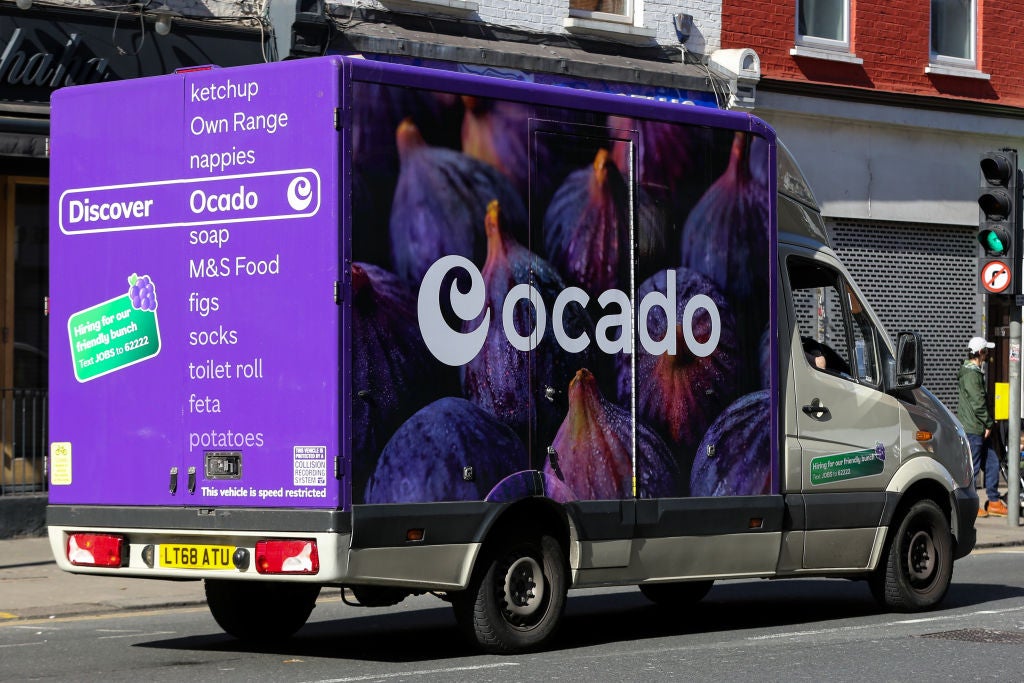
Over the past 20 years, the countries making up the ‘BRICS’ have gone from emerging market economies to essential drivers in the global economic, financial and geopolitical arena.
In August 2023, BRICS leaders (except for Russia’s Vladimir Putin) will converge on South Africa for the group’s 15th annual summit. The event has generated intrigue as well as controversy among its members, supporters and opponents.
Since their first summit in 2009, the BRICS countries – Brazil, Russia, India, China and South Africa – have sought to counter the US-led world economic order by creating alternative financial institutions. Leaders have also advocated for greater dedollarisation by using national currencies, as well as calling for a BRICS common currency.
The rise of the BRICS has not gone unnoticed among those countries that tend to lie outside of the world’s more influential groupings. More than 40 have expressed interest in joining the BRICS, but with this possible enlargement on the horizon, are there any challenges that existing or would-be members of the BRICS should be aware of?
Who are the BRICS?
Collectively, Brazil, Russia, India, China and South Africa represent more than 42% of the global population, 30% of the world’s land territory, 23% of GDP and 18% of global trade, according to the World Bank.
Jim O’Neill, the then-chief economist at Goldman Sachs, developed the concept of BRICs (excluding South Africa at the time) in 2001. He identified that these economies could potentially replace the European economy in terms of market size, and that China would become the world’s largest economy by 2050.
How well do you really know your competitors?
Access the most comprehensive Company Profiles on the market, powered by GlobalData. Save hours of research. Gain competitive edge.

Thank you!
Your download email will arrive shortly
Not ready to buy yet? Download a free sample
We are confident about the unique quality of our Company Profiles. However, we want you to make the most beneficial decision for your business, so we offer a free sample that you can download by submitting the below form
By GlobalDataO’Neill stressed that the G7, a group of seven advanced economies, should be adjusted and incorporate BRIC representation, given their growing weight and importance.
Prior to 2009, BRICS traded and cooperated with each other, but but did not receive a great deal of global attention. Things began to shift in the wake of the 2008 global financial crisis, when growing discontent with the world economic order, Western dominance and a lack of voice from developing countries prompted greater cooperation.
The first BRICS summit was held in Russia in 2009. At the event, leaders called for the reform of international financial institutions and greater representation of emerging economies in these institutions. They also demanded a more diversified international monetary system.
“To date, the BRICS group has primarily served as a strategic forum for the five big emerging markets to meet and exchange views, pursue visions of a multipolar world and to push back on US-led institutions and Western hegemony,” says Jon Harrison, managing director, emerging markets macro-strategy, at consultancy TS Lombard.
What have the BRICS achieved to date?
As a group, the BRICS countries increased their annual foreign direct investment (FDI) inflows from $84bn in 2001 to $355bn in 2021, according to data from the UN Conference on Trade and Development. The BRICS’ share in global FDI inflows jumped from 11% in 2001 to 22% in 2021.
Collectively, the BRICS have achieved two economic milestones, namely the Contingent Reserve Arrangement (CRA) and the New Development Bank (NDB). Both of these seek to offer an alternative to existing institutions such as the International Monetary Fund (IMF).
The CRA is a financial mechanism that supplements members’ international foreign exchange reserves. The CRA aims to protect members during fiscal shocks such as a balance of payments crisis. The initial commitment was $100bn, with China being the largest contributor followed by Russia, Brazil and India.
Secondly, the creation of the NDB, the BRICS’ own development bank, is by far the most tangible development. Established in 2015 and located in Shanghai, the NDB is involved in financing infrastructure and sustainable projects as well as developing capital markets in BRICS and other developing countries. Since its inception, the NDB has approved $30bn in projects.
In 2021, the NDB admitted the United Arab Emirates, Uruguay and Bangladesh as new members in an expansion push. Egypt, the Arab world’s most populous country, became the latest member to join in February 2023.
Other countries such as Saudi Arabia have expressed interest in joining the bank. Riyadh’s addition would boost ties with China, help mobilise capital and reduce the NDB’s dependency on Russia.
Why do countries want to join BRICS?
As the global geopolitical landscape becomes more polarised, between the US-led existing world order and a growing China-led alternative, several countries are pondering whether to join the BRICS.
Since 2017, the BRICS countries have pushed for further cooperation with developing countries. This has included the attendance of non-BRICS leaders at summits as guests or observers.
In a bid to boost the alliance, in May 2022, China voiced support to expand membership of the BRICS. Accordingly, more than 40 countries, including Algeria, Argentina, Cuba, Ethiopia, Iran, Kazakhstan and Saudi Arabia expressed interest in joining the bloc.
While each country has its own specific reasons for wanting to join the BRICS, there are three common factors that most would identify with.
First, several countries are seeking greater FDI from and trade with China, as well as access to large emerging markets such as India and Brazil.
“Many emerging markets looking to join the BRICS are hoping to benefit from Chinese demand for their commodity exports and to attract more Chinese FDI to their economies,” says Harrison. “Oil exporters in the Middle East led by Saudi Arabia and the UAE are eager to court more Chinese investments while growing their exports to China. The same can be said for oil, critical minerals and agricultural exporters in Africa, Latin America and Asia.”
Second, a large proportion of countries seeking to join the BRICS are emerging or developing economies. Often, they rely on institutions such as the IMF when they get into financial distress. The BRICS, through the NDB, offer an alternative model to the Western-led financial system.
“The hope among cash-strapped emerging markets is that the bank [NDB] will be able to finance new loans without some of the more onerous conditions attached to the IMF and World Bank loans,” says Harrison. “These objectives also fit within the framework of the BRICS’ objective of diversifying away from the US dollar.”
Third, countries are looking for a geopolitical counterweight to US/Western economic hegemony.
“The main advantage and reason why so many countries are flocking to [the BRICS group] is to move away from US/EU dominance,” says Tariq Al Rifai, CEO of Quorum Centre for Strategic Studies, a Gulf-focused economic think tank. “It is a sign to the US/EU that the rest of the world is tired of their hegemonic policies and will carve their own path from now on.”
Is a BRICS common currency on the cards?
The US dollar accounted for around 88% of international trade and 59% of all foreign exchange reserves at global central banks in 2022, according to the IMF. From 1999 to 2019, the US dollar accounted for 96% of trade invoicing in the Americas, 74% in the Asia-Pacific region and 79% in the rest of the world, according to research by the Federal Reserve.
Academics have noted the weaponisation of the US dollar by the US Government against smaller states or its adversaries, in international trade, payments and capital markets.
This became pertinent after Russia’s invasion of Ukraine in 2022, through Western sanctions against Moscow. These included the removal of Russian banks from SWIFT, making it difficult to conduct international transactions necessary for trade, FDI and loan repayments.
Leaders such as Brazil’s President Luiz Inácio Lula da Silva have called for greater dedollarisation in emerging economies. Their hope is that dedollarisation will reduce reliance on the US dollar as a reserve currency, medium of exchange or unit of account.
BRICS have sought to trade in alternative currencies like the Chinese yuan. For example, earlier in 2023, Indian refiners settled some oil import payments to Russia using the yuan.
“There are economic reasons for countries to join BRICS’ dedollarisation initiatives, such as to reduce foreign exchange risk and trade transaction cost,” says Zongyuan Zoe Liu, a fellow for international political economy at the Council on Foreign Relations.
To further counter the US dollar’s dominance, some leaders have proposed a BRICS common currency. To support such an idea, there has been speculation that this currency could be commodity based or backed.
In July 2023, Russian officials suggested that the BRICS plan to introduce a new gold-backed trading currency at their upcoming summit in August 2023.
BRICS officials have denied that there are plans to launch a common currency at the forthcoming summit. Rather, they reiterate that they plan to deepen trade and settle in local currencies.
Nonetheless, some analysts say a gold-backed currency could be a turning point for the BRICS, while challenging the dollar.
“I was sceptical of a BRICS [common] currency until I heard that they want it to be backed wholly or partially by gold,” says Al Rifai. “This, I believe, would give the currency a lot of support. However, the biggest challenge in making this currency work is the support from its largest members.”
Others are unconvinced that a gold-backed currency would be workable at all.
“A collective gold standard currency would not be plausible because BRICS members would not be able to agree on the mechanisms for such a currency,” says Liu. “For example, they would be unlikely to easily agree on the ratios of national currencies to gold.”
What challenges face the BRICS countries in the future?
The BRICS appear to be a formidable alternative to the current world economic order. However, there are challenges facing the alliance.
India’s relations with China are fractious. Historically, both countries have had rifts, but India is now adopting a more assertive foreign policy. For example, New Delhi’s increasing competition with Beijing in regions such as the East African Community could make cooperation difficult. Furthermore, India’s warming relations with the US may make the BRICS less cohesive.
“India is the odd one out [of the BRICS] and may become increasingly semi-detached – there is speculation that it may not fully participate in the proposed BRICS currency,” says Harrison. “India benefits from Russian oil and Russian weapons but is increasingly worried about the security threat from China as well as the impact of Chinese companies crowding out India’s own tech companies.”
Although several countries are lining up join the BRICS, analysts say enlargement may not benefit all members.
“India and Brazil may see more disadvantages than advantages to an expanded ‘BRICS-plus’ grouping, as their voices will be diluted the bigger the group gets, even as China is set to remain the dominant player of the coalition,” says Harrison.
The impact of Western sanctions against Russia is constraining Moscow’s relations with other BRICS nations. For example, Indian and Chinese banks have largely restrained their lending to Russian entities, in compliance with Western sanctions. Similarly, in July 2023, the NDB reiterated that it is not considering new projects in Russia, despite Moscow being a shareholder. It halted new transactions in Russia in March 2022.
What does the future hold for the BRICS bloc?
Since 2009, the BRICS countries have tried to counter the world economic order by establishing their own entities such as the NDB. While these institutions may offer emerging economies an alternative to the status quo, they are unlikely to significantly challenge incumbent organisations, at least in the medium term.
Although the BRICS countries as a collective have yet to reach their full potential, and more developing countries are keen to join the drive for greater dedollarisation as well as attract Chinese trade and FDI, weaknesses within the BRICS are starting to become more apparent. India’s growing assertive foreign policy, worries about the over-enlargement of the group and Western sanctions against Russia present hurdles to existing and would-be members of the group.
Ultimately, the overwhelming dominance of China within the BRICS group may mean that countries will have to decide whether their economic futures lie with Washington or with Beijing.






